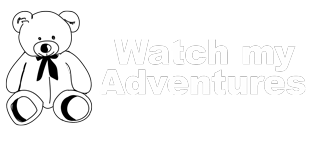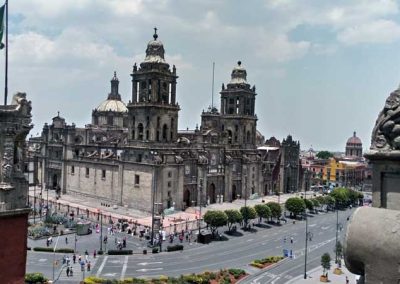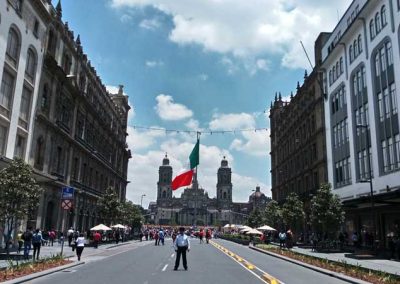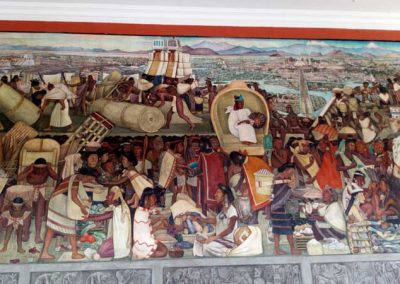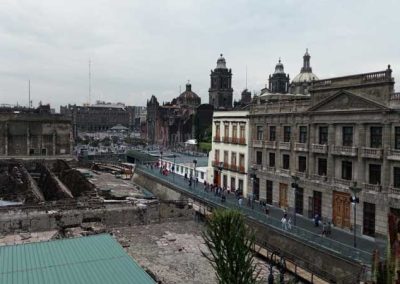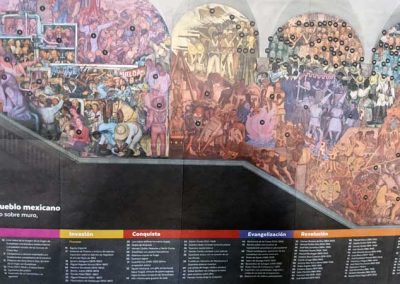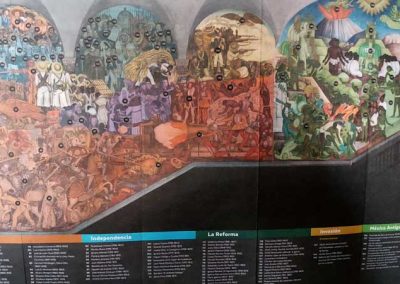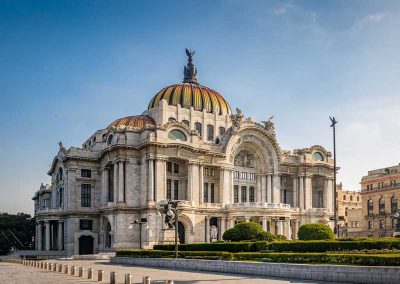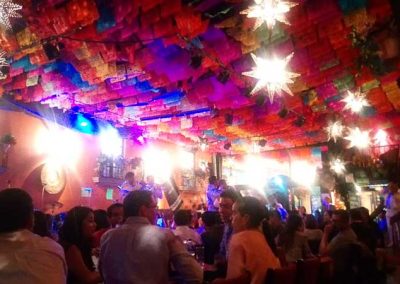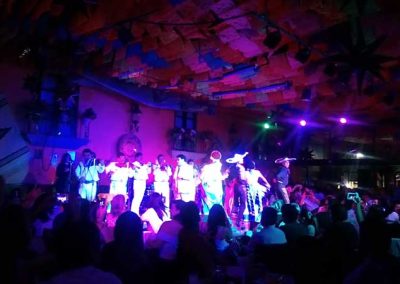The historic center is the heart of Mexico City. Is without any doubt, the cultural capital of America. That’s why it was declared as cultural human heritage in 1987 by UNESCO. This place is son vast in museums, activities, musical, sport and artistic shows that a unique tour is not enough. Even much of their native people do not know this city completely.
Just imagine, the American business magazine Forbes, declare the historic center of Mexico City as fourth world better place to eat, just behind Tokyo, Paris and Rome. And what to say of its historic legacy.
In BTUVI we are conscious that hiring a tour do not only consist in seeing and taking selfies. With us, visiting the historic center of Mexico City is knowing in depth the history of this place, taking back home all the legends that make it magic, having direct contact with the pieces of work of their protagonists.
Mandatory places in the Historic Center are the Fine Arts Palace, an enclosure ordered to construct by then president Porfirio Díaz to celebrate the centenary of the beginning of Mexican independence war, althought it was not inaugurated until 1934. Inside the palace there are the murals of José Clemente Orozco, David Alfaro Siqueiros and Diego Rivera, three worldwide recognized artists, because they represent the Mexican muralism stream. Into this place there are room for opera concerts and is home for the National Dance Company and the Folkloric Ballet of Amalia Hernández. Even in May, 1990, the most famous Mexican singer and composer, Juan Gabriel, played a show accompanied by the Symphonyc National Orchestra, directed by Enrique Patrón de Rueda.
Next to the Fine Arts Palace is Madero Street, that a few years ago was converted into a pedestrian zone. Walking through this avenue will let us arrive to the Zócalo, but if we stop a little bit earlier, we can see the Estanquillo Museum, a gallery created by the recognized writer and journalist Carlos Monsiváis, that holds a beautiful collection of Mexican contemporary culture.
When you get to the Zócalo, at your left side you can see the Metropolitan Cathedral. Its complete name is Metropolitan Cathedral of the Assumption of the Holy Virgin Mary to the Skies of Mexico City and is the campus for Mexico’s Archdiocese, that is the official home of Catholic Church in Mexico City. With the Guadalupe Basílica, this is one of the two most emblematic places of catholicism in Mexico. Its construction started in 1573 and ended until 1813. The main objective of its raising was to impose the Catholic religion above the beliefs of the ancient Mexico-Tenochtitlan. It was the Spanish architect Claudio Arciniega who designed the first planes of its construction.
After exit the cathedral, what most comes to your sight is an enormous Mexican flag just in the center of the Zocalo. In this giant square is where each September 15, hundreds of thousands of Mexicans reunite with their eyes looking at National Palace to listen the traditional “independence scream”, that is the moment when the president of Mexico comes out to the balcony and scream “Long live to heroes that gave us this land! Viva Hidalgo! Viva Morelos! Viva Josefa Ortiz de Dominguez! Viva Mexico! Viva Mexico!” This celebration is to commemorate the Mexican independence, when a group of insurgents leadered by the priest Miguel Hidalgo y Costilla declared themselves against the Spanish crown. The independence war began in 1810 and ended until 1821, when Guadalupe Victoria was declared as the first president of Mexico.
What is good about doing a tour in a private way is that you travel only with the people you care. With BTUVI, the more people on the tour the cheaper per person. Also, having a private guide makes that him or her can explain in detail each visited place. Do you have questions in English? We answer you! Speak French? We can help you! Come from Korea? No problem! We know the details, stories and legends from each place and we are going to tell you.
Actually, National Palace is the home of the president of Mexico, but what is most important is everything that is inside there. During the splendor of Aztec empire, in that place was the Moctezuma Xocoyotzin Palace, but when the Spanish conquerors came, instead of this palace, they put over the current construction that holds a great part of the Mexican contemporary pictoric work.
In National Palace there are paints of the independence heroes, such as Vicente Guerrero, Miguel Hidalgo and José María Morelos y Pavón. Also, in their different rooms, such as the Ambassadors, Juárez, Purple, Green, Blue or the parlamentary enclosure, it can be observed samples of different Mexican history chapters, but what most highlights, are the murals of Diego Rivera in the stairs cube of the central courtyard. The story tells that the then public education secretary, José Vasconcelos, ask Rivera to narrate the Mexican epic with a paint. The reason: in that time, the majority of Mexicans were illiterate and the only way to communicate their own history was through the painting.
Next to National Palace, there is the Major Temple. Is incredible to admire how two cultures live together in a same place: Prehispanic with Spanish. The Major Temple was the main building of the ancient Tenochtitlan and here was the political center of this civilization. Also, here were the Eagles House, the Calmecac, the ball game and the Ehécatl Temple. Its a whole experience to live it.
But when the night falls, is time to celebrate and sing, and the best place in the city is Garibaldi. If you want to live the authentic experience of Mexican music, Garibaldi is your place. Here you’ll find a lot of mariachis –the mariachi is a type of music from Mexico worldwide recognized– and you can know some restaurants with shows and folkloric dances accompanied with the best tequila.
And here ends this tour, but there is more in Mexico City. Did you see why with only one private tour is not enough?
